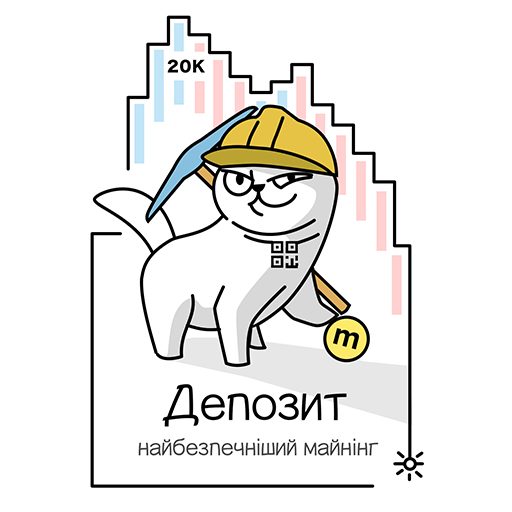KATE GOLDFINCH, Science Editor at The Fintech Times
Monobank is the first mobile-only bank in Ukraine. The company was founded by three partners — Oleg Gorokhovskyi, Dmytro Dubilet and Michael Rogalskiy, former managers of the nationalised PrivatBank, the country’s largest bank. The monobank project was developed from scratch in just one year and was launched in October 2017. As of 1st September 2018, monobank has already served more than 400,000 clients. This has meant that, with just ten months of operation, monobank has managed to rank among the top 15 Ukrainian banks (based on number of clients). The ideology of mobile-only allows the bank to operate without the costs of maintaining offices and classic banking infrastructure. And since there are no other neo-banks in the country, it was easy to offer customers cheaper rates than elsewhere in Ukraine.
Oleg Gorohovskiy believes that affordable loans to Ukrainians, and a mobile app as a convenient tool for managing a credit card, have a good effect on purchasing power and, as a result, on the well-being of business in the country. The company issues credit cards and provides the best mobile app in the market. Michael Rogalskiy says that their affordable rates were achieved due to the fact that 80 percent of clients learned about the bank from word of mouth. The bank became a hit on social media thanks to its clear UX, the use of the character the QR Cat, and its referral program.
You have created the first-ever mobile bank in Ukraine. What was your biggest challenge?
Misha Rogalskiy: I would say the biggest challenge was to create all processes and procedures so that the bank could function without physical branches. No one did it before us in Ukraine, and there were gaps in regulation. For instance, to be compliant with KYC procedures, we had to create our own network of couriers who meet customers face to face for card issuing.
Even at the pre-launch stage, the amount of publicity you attracted was incredible. How did you achieve that?
Oleg Gorokhovskiy: We got tremendous support from social media. Before the launch, we got 50,000 pre-subscribed customers through Facebook posts. We were very open about our plans and execution, which is very unusual for the corporate world, and banks especially. This openness attracted a lot of media attention and helped us gather our most loyal customers.
Dima Dubilet: There is another funny element here. Several months before our launch, I posted a funny picture of my cat on my Facebook page, which went viral, and suddenly the cat became popular on Ukrainian social media. So we leveraged the cat a lot in our marketing communications, people just love him!
You are highly integrated into communications with your clients. Monobank appears approachable and user-friendly. What do you think are the most important aspects of communication for the bank of the new era?
MR: All our media and public relations come directly from us, the founders. It became a part of our culture. Any of our customers can reach us via Facebook seeking support if a problem hadn’t been resolved by standard channels. Also, we invest a lot to make our customer support really friendly and helpful. OG: We also have 10,000 beta users. These are our most loyal and valuable customers, who test our new products and give us recommendations on what products or features to launch next.
What is the background and what is the expertise of your management team, and your IT team?
DD: Our company has 150 specialists with huge expertise in IT and banking. Prior to monobank, we all worked together in one of the largest banks in Eastern Europe for over 10 years. This makes us very different to other fintech startups.
What do you think the future of digital banking will be like?
DD: I think banking should become more invisible. Like water or electricity supply, all the financial services should be just happening in the background. That’s what I love about Uber-like services compared to regular cabs — you don’t think about payment at all, it just happens!
OG: Аnother obvious trend is that big players like Apple or Google are trying to enter the market. It’s both an opportunity and a threat to traditional banks.
From the moment of your launch, your user base grew to over 400,000 users, and your growth seems to be non-stop. How do you manage to keep the growth pace steady?
MR: First of all, it’s the product itself. We have the best value proposition in the market. Because we don’t have costs for physical infrastructure, our interest rate is lower; we practically don’t charge any fees for day to day transactions; and we have a loyalty program, which gives customers the ability to get substantial cashback from all purchases in two categories of merchants, that they choose. We have already paid out more than 100m hryvnias (£3m) through this programme. We’re also really proud of the application itself. We got rid of everything that wasn’t crucial for banking apps, and that gave us an opportunity to make everything much simpler. For example, making a peer-to-peer payment is as natural as sending someone a text message. You just know how it works.
DD: But on top of that, we managed to create a bank with an emotional connection with customers. For instance, we have a cat mascot in the app which appears on every success screen. And we put a sticker pack into every envelope, with a card. The cat itself became popular on the social network, which helps us promote the brand.
Do you think clients are ready for a fully digital bank?
OG: Yes. I’m sure that the majority are ready. And I think the demand shift here is even stronger than in other industries. I can understand the value of a brick and mortar store when it’s about buying groceries, for instance. But even the most active retrograde wouldn’t think that going to a bank branch to make a payment is ok! So yes, I think clients are ready, banks – not so much.
Did you have to rethink your strategy along the way, or was your concept immediately 100% correct, and appeared to be an exact fit for the market?
DD: We are constantly trying something new every couple of weeks. Something becomes an instant hit, or sometimes we have to alter our product after receiving feedback from our beta-testers. For instance, we had to change our instalments offering slightly after the first month of going live. But in general, our strategy remains untouched. We want to create the best credit card.
What is your business model?
MR: Our business model is around credit. We provide two credit products within one card. This card is a hybrid between a credit and a debit card. You can have a positive balance and get an interest rate on it, or you can go into an overdraft within your credit limit with a grace period of up to 62 days. The second product is the instalments loan that I mentioned earlier. It gives customers the ability to buy anything from any merchant in the world and pay it back in instalments, whether it is a nearby computer store or Amazon.
One of your core offerings is lending, and it attracts a significant amount of clients. How does it reflect on the economics of your bank?
OG: If done right, lending is a great business. It’s something that customers want. To have a reliable and fair lender in your corner gives you a little calm and confidence. The most challenging thing here is the risk assessment. To assess creditworthiness, we use a lot of data from various sources, together with information that we can reach through a mobile phone. Analysing that with machine learning algorithms and AI, we manage to archive NPL of less than 2%. All of these efforts made us operationally profitable in less than one year after going live. I don’t think it would be possible without lending.
Is your business model scalable? Do you plan to expand to new geographical areas outside Ukraine?
MR: Global companies erase lines and differences between markets. Today the interface of Uber, for instance, has become a universal language of ordering a taxi. It doesn’t matter where you are, all process and interactions are the same. This goes for Google, Facebook, and Amazon as well. I think that banking will also join this movement, and we will see global players like Uber, but in the banking field. We won’t be standing on the pavement watching this happening in front of our eyes! We’ll try to be a part of it.
The post We Have No Competitors – Only Allies: The Future of Banking has Arrived in Ukraine appeared first on The Fintech Times.




Comments